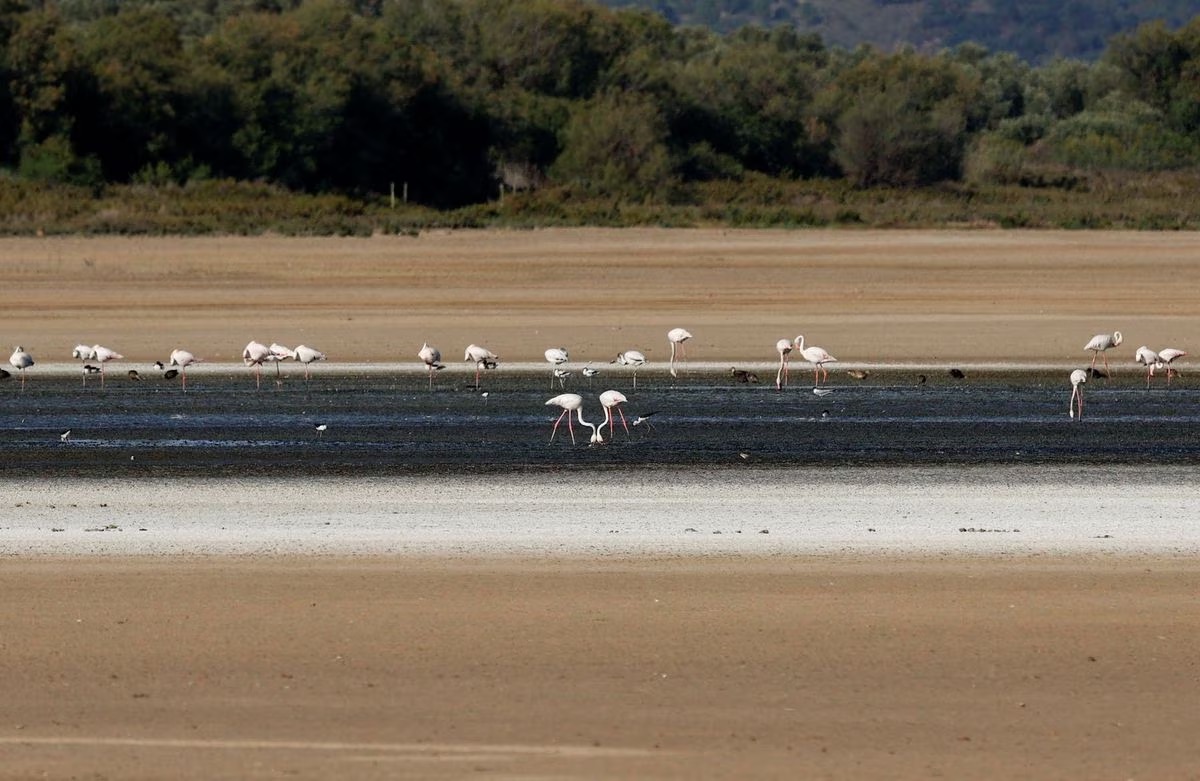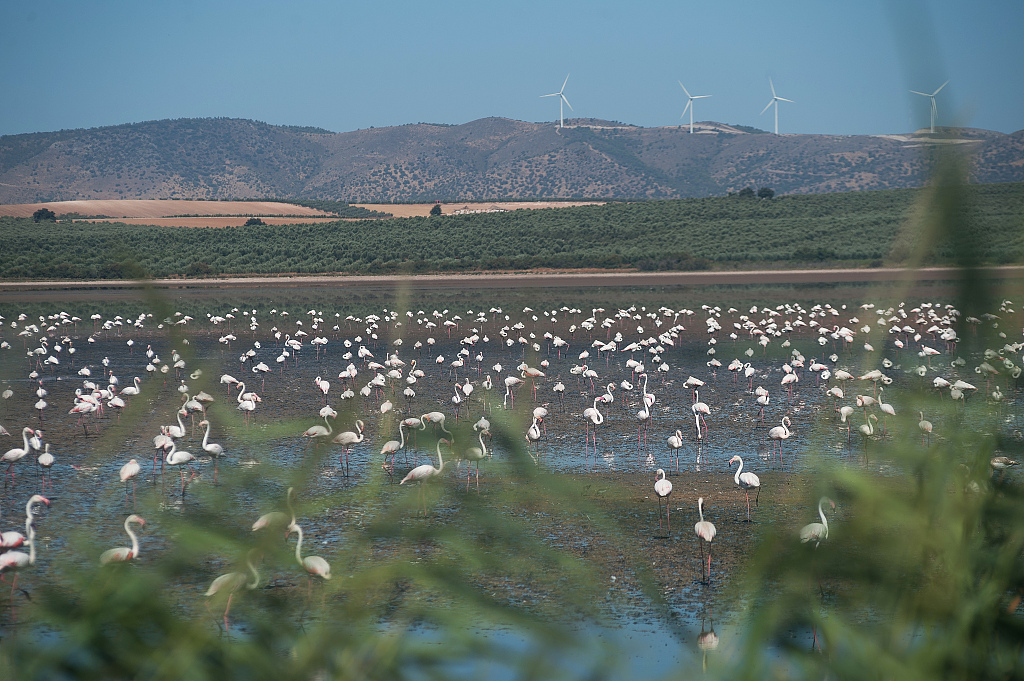Once a haven of flamingos, now one of Spain's largest lagoons has turned into a salt desert due to severe drought.
Each year, Fuente de Piedra Lagoon, located in the north of the province of Malaga in Spain, welcomes tens of thousands of flamingos, but this year, the birds have skipped this saltwater lagoon because it has dried up.

Flamingos feed in the mud on a dried up lagoon, where a colony of flamingos has not been able to nest, as it does annually, due to the severe drought, at the Fuente de Piedra nature reserve, near Malaga, Spain, June 17, 2023. /Reuters
Flamingos feed in the mud on a dried up lagoon, where a colony of flamingos has not been able to nest, as it does annually, due to the severe drought, at the Fuente de Piedra nature reserve, near Malaga, Spain, June 17, 2023. /Reuters
At six kilometers long and covering an area of about 1,400 hectares, the lagoon is the largest in Andalusia, the southernmost region in Spain. According to the regional Andalusian government's website, the lagoon is home to the largest colony of flamingoes in the Iberian Peninsula, second in importance in Europe.
However, only a few pairs of birds were found here this year.
According to Spain's meteorological agency, since the start of the hydrological year last October, the country received 28 percent less rain than expected by mid-May 2023, and only 220 liters per square meter have fallen in Andalusia, half the usual average, according to the local government.
The low water levels are "the result of several straight years of low rainfall," said Africa Lupion, curator of the Fuente de Piedra nature reserve.
This is the first time in the 21st century that this wetland has run out of water in the spring; it has only previously happened in 1995 and 1997 (records began in the early 1980s), according to local media.

A group of flamingos on a lagoon at the Fuente de Piedra Lagoon, near Malaga, Spain, August 17, 2019. /CFP
A group of flamingos on a lagoon at the Fuente de Piedra Lagoon, near Malaga, Spain, August 17, 2019. /CFP
Since 1984, when Fuente de Piedra Lagoon was declared a natural reserve, more than 200,000 flamingo chicks have hatched at the lagoon, said Andalusian authorities.
This year's spring was the hottest and second-driest in Spain since records began in 1961, with higher-than-average temperatures likely to continue this summer.
To learn more
Spain announces exceptional drought measures worth $2.4B
Soaring temperatures, low rainfall in Spain raise serious concerns of prolonged drought
(With input from Reuters)
(If you have specific expertise and want to contribute, or if you have a topic of interest that you'd like to share with us, please email us at nature@cgtn.com.)